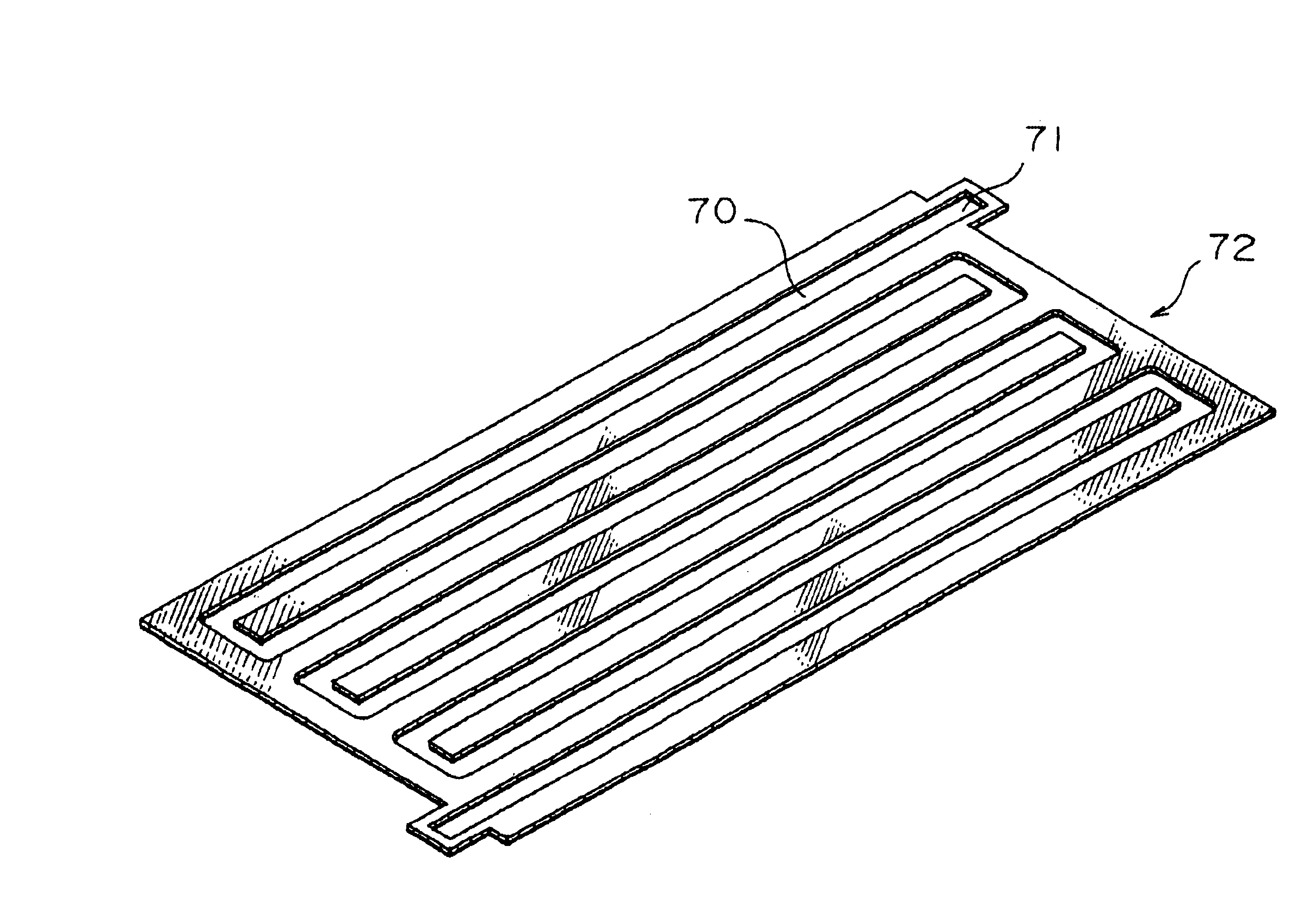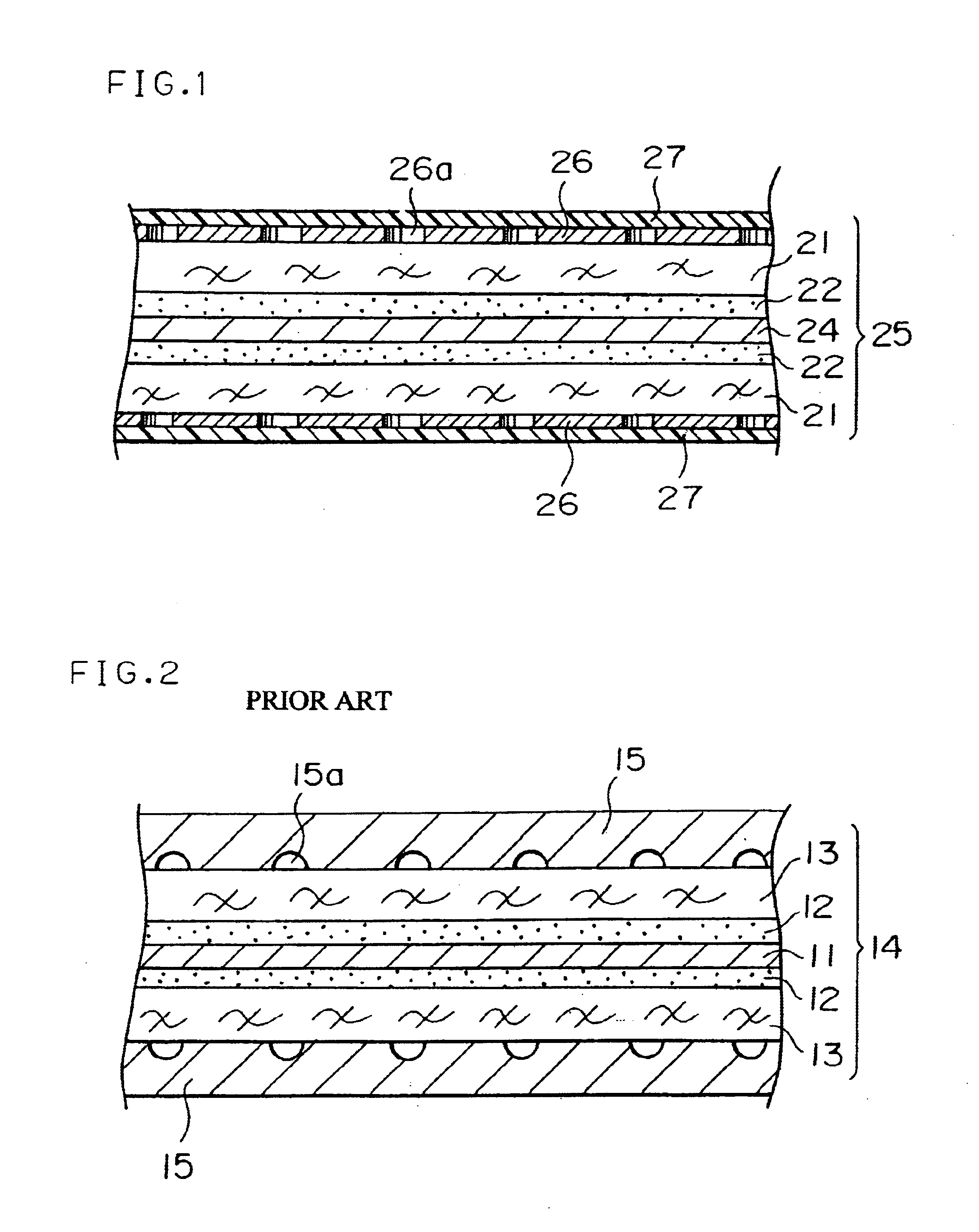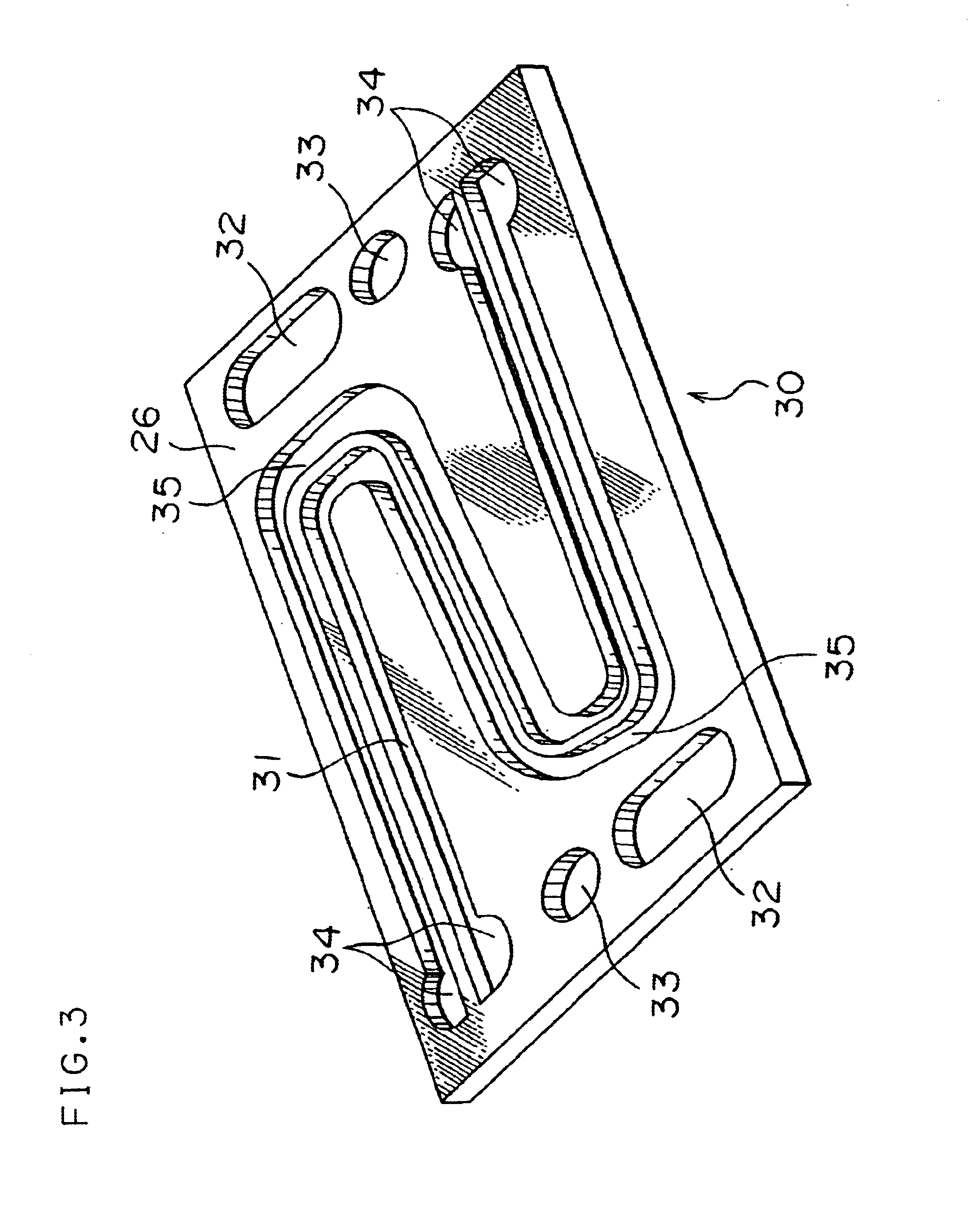Fuel cell stack with separator of a laminate structure
- Summary
- Abstract
- Description
- Claims
- Application Information
AI Technical Summary
Benefits of technology
Problems solved by technology
Method used
Image
Examples
example 2
In Example 2, the side faces of a fuel cell stack, which included 100 unit cells and was manufactured in the same manner as in Example 1, was sealed with a gas-tight rubber. The gas-tight rubber used here was a phenol resin. The phenol resin solution was spreaded on the side faces of the fuel cell stack and dried to seal the side faces of the fuel cell stack.
Evaluation
A battery test of the fuel cell stack thus obtained was carried out under the same conditions as those of Example 1. The output power of the fuel cell stack was 1080 W (30 A-36 V).
A leak test of this fuel cell stack was also carried out. In the test, an outlet of cooling water was closed and a hydraulic pressure was applied from an inlet of cooling water. No leakage of water was observed under the hydraulic pressure of 1 kgf / cm.sup.2. This proved the sufficient sealing property. From the result, it was confirmed that the arrangement of sealing the side faces of the fuel cell stack is extremely effective to improve the ...
example 3
In Example 3, an external manifold-type fuel cell stack was assembled as shown in FIG. 5 from the unit cells, which were manufactured in the same manner as in Example 1.
In first, specific parts corresponding to the internal manifolds were cut out from the unit cells manufactured in Example 1, and caused inlets and outlets of gases and cooling water to be exposed to the side faces of the unit cells.
A phenol resin used as the sealing rubber was spreaded on the side faces of the fuel cell stack and dried to seal the side faces of the fuel cell stack. In this example, the path of the inlets and outlets of gases and cooling water were not sealed by the sealing rubber. The phenol resin solution was carefully spreaded to make a flat sealing surface, which was in contact with the external manifold.
As shown in FIG. 5, the external manifolds 51 of stainless steel was arranged on the side faces of a unit cells 8 to cover an array of the exposed inlets of the air. In a similar manner, external ...
example 4
The process of Example 4 applied the conductive plate B shown in FIG. 6 for the separator having the flow paths of gas and cooling water and assembled an external manifold-type fuel cell stack by laying the unit cells manufactured in Example 3.
Evaluation
A battery test of the fuel cell stack thus obtained was carried out under the same conditions as those of Example 1. The output power of the cell stack was 1080 W (30 A-36 V).
The conductive plate B used for the separator has a through groove in the thickness of the conductive plate B. The through slit continuously meandering from one end to the other end of the conductive plate B favorably reduces the manufacturing cost.
PUM
 Login to View More
Login to View More Abstract
Description
Claims
Application Information
 Login to View More
Login to View More - R&D
- Intellectual Property
- Life Sciences
- Materials
- Tech Scout
- Unparalleled Data Quality
- Higher Quality Content
- 60% Fewer Hallucinations
Browse by: Latest US Patents, China's latest patents, Technical Efficacy Thesaurus, Application Domain, Technology Topic, Popular Technical Reports.
© 2025 PatSnap. All rights reserved.Legal|Privacy policy|Modern Slavery Act Transparency Statement|Sitemap|About US| Contact US: help@patsnap.com



